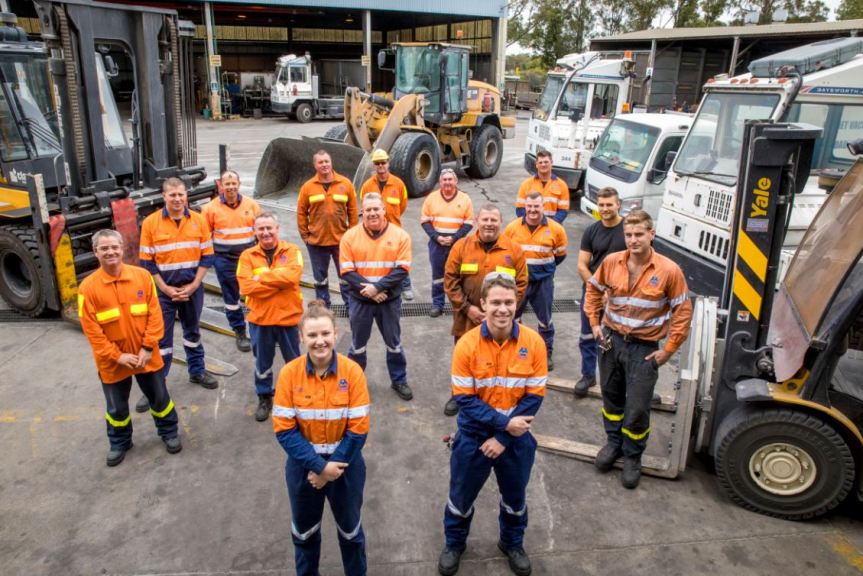The apparent object of renewable energy targets is to make power so expensive and unreliable that eventually no one will bother to use it. At least that’s what occurred in Australia, thanks to its Federal government’s Renewable Energy Target, which will redirect more than $60 billion to chaotically intermittent wind and solar over the life of that scheme.
The relationship between rocketing power prices and unreliable, subsidised wind and solar is pretty apparent (see above).
And the relationship between rocketing power prices and unemployment in those industries and businesses that heavily depend on electricity as an input, is equally apparent. Tens of thousands of manufacturing jobs already disappeared. Miners are mineral processors are next.
Between the Federal Liberal/National Coalition and the Victorian Labor government, both have presided over energy ‘policies’ which were designed to drive power prices through the roof. Well, that’s the result, anyway.
Now, faced with the wipeout of entire energy hungry industries – such as the aluminium processing industry – and the inevitable loss of thousands of jobs, both governments are using (you guessed it) taxpayer’s money to salvage what’s left.
In the irony of ironies, the Federal and Victorian governments are aiming to keep the Portland aluminium smelter alive by subsidising the cost of its electricity supply, to the tune of $40 million each year. That is, the governments that willfully created the mess are using our money to undo the damage. Although, as long as Australia’s renewable energy targets and policies remain in place, it’s more in the nature of palliative care.
Here’s Alan Moran with the bewildering details of what passes for energy and economic policy in the once ‘Lucky Country’.
Saving the Portland smelter: one problem solved, others created
Catallaxy Files
Alan Moran
20 March 2021
With its rescue package of a low-cost electricity supply for Victoria’s Portland aluminium smelter, the Commonwealth and Victorian governments have reprieved the smelter from a hangman’s scaffold that they themselves built.
The Portland aluminium smelter, along with Tomago (NSW), Boyne Island (Queensland) and Bell Bay (Tas), is among the nation’s highest value-adding manufacturing facilities. Aluminium smelting accounts for about 12 per cent of total electricity usage.
These facilities located to Australia during the 1980s in response to our dependable, coal-based electricity supply, which became highly competitive following a quadrupling of oil prices.
Unfortunately, over the past two decades, governments have pursued policies favouring wind and solar energy with some $7 billion a year in regulatory and taxpayer support. This goes to a market that previously grossed only $10 billion a year. Those subsidies both discriminate against coal and add to the costs of coal generators. In addition, the Victorian government has tripled its levy on mined coal, a rare example anywhere in the world of a tax on an input into production.
The effect of the subsidies to renewables is well documented. They have caused a rapid increase in the wind/solar share of production. Hence, the renewables’ highly irregular output has displaced that of dependable coal. Once the subsidised supplies force a coal generator to close – as happened in 2016 with Victoria’s Hazelwood plant – prices hit a new higher plateau and the replacement of stable by unstable power creates additional costs and an enhanced supply precariousness.
Having doubled with the Hazelwood closure, wholesale electricity prices have halved as a result of a massive upsurge in subsidised renewable supplies alongside a COVID slump in total electricity demand. New renewable capacity hit record levels in 2020. According to Minister Angus Taylor, “In 2020, Australia invested $7.7 billion or $299 per person in renewable energy”. Australia’s per capita spending on wind and solar is far and away the highest the world.
In spite of the Alan Finkel/Sanjeev Gupta rhetoric, green aluminium cannot cut the mustard to enable a low-cost, reliable electricity supply. Aluminium plant freezes up after a few hours without electricity. Recognising this (but not their complicity in creating it) , the Commonwealth and Victorian Governments brought together major suppliers in a deal which includes the smelter getting $40 million a year in government support.
The governments hope the deal will last five years.
But even this time frame is problematic. Both the major markets for Australian aluminium, the EU and US are threatening to introduce carbon taxes on nations (and Australia is named as one of these) which are said to be doing too little to decarbonise their economies.
Moreover, neither the EU nor the US are reticent when it comes to establishing punitive tariffs on imports that they deem to be in receipt of government subsidies. And, as a result of the pressures placed on coal-based electricity, the Portland smelter is floating on a sea of support. Not only is this support direct but indirect support is also derived from the state government, concerned about the reliability of its favoured wind/solar supply, to enable the Yallourn Power Station to remain open until 2028.
The two governments are preening themselves at having saved a valuable national asset. But the rescue was only required due to the governments’ policies that penalise a low-cost reliable source of electricity. And, in spawning the need for ever-more counteractive subsidies, government activities destroy the efficiency of competitive markets and create vulnerabilities by inviting countervailing tariffs from major importers.
Catallaxy Files


